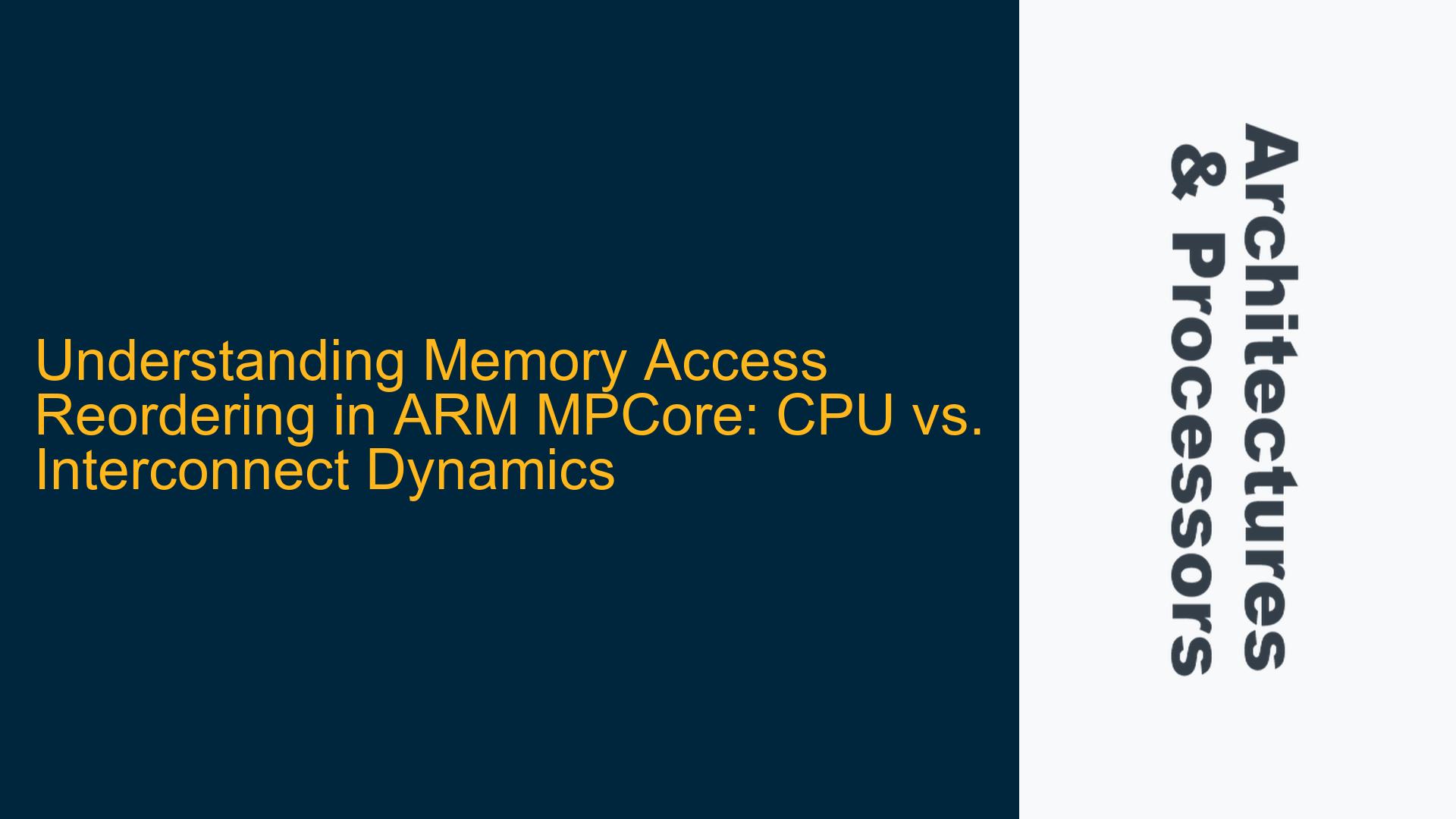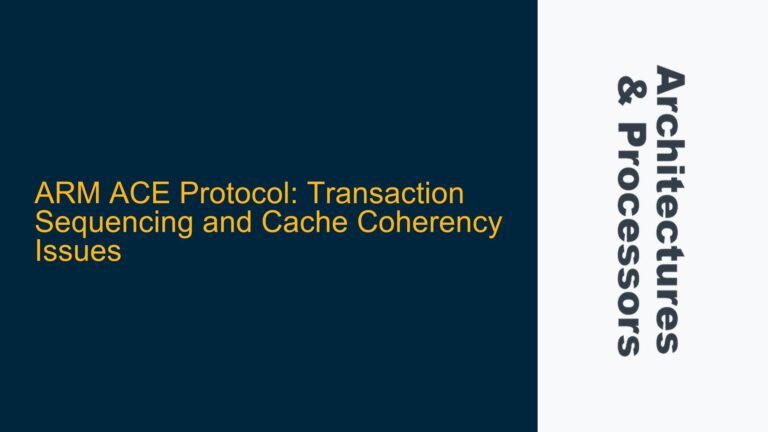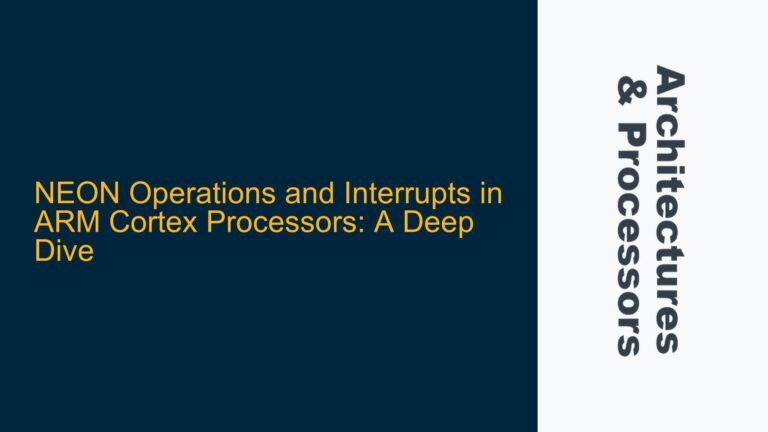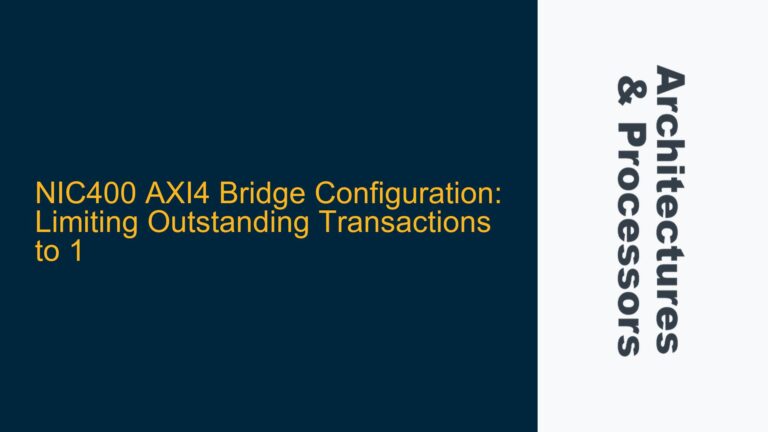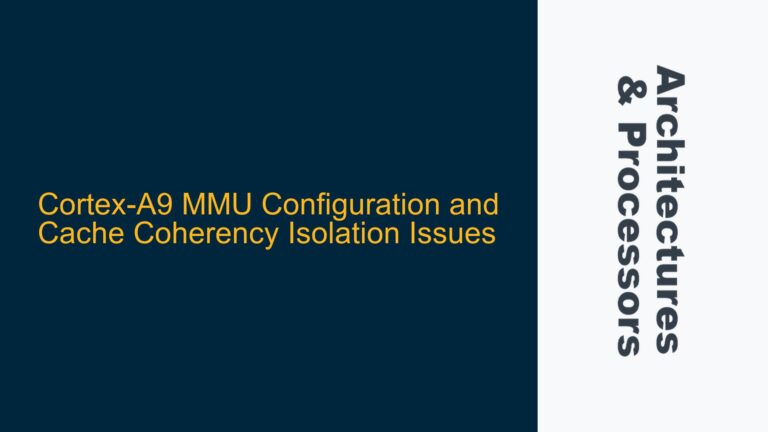ARM Cortex-A Series Memory Access Reordering Mechanisms
In ARM Cortex-A series processors, such as the Cortex-A57 and Cortex-A78, memory access reordering is a critical aspect of system performance optimization. The processor’s ability to reorder memory accesses can lead to significant performance improvements but also introduces complexity in ensuring memory consistency across multiple observers in a system. The reordering can occur at two primary levels: within the CPU core itself and within the interconnect fabric that connects the CPU to memory and other system components.
The CPU core can reorder memory access micro-operations (micro-ops) as part of its out-of-order execution capabilities. This means that independent load and store operations can be issued to the load/store pipelines in an order that differs from the program sequence. This reordering is typically done to maximize the utilization of the execution pipelines and to hide memory latency. However, this reordering is constrained by the ARM memory model, which defines the rules for how memory operations can be reordered while still maintaining the appearance of sequential consistency to the programmer.
The interconnect fabric, such as ARM’s ACE (AXI Coherency Extensions) or CHI (Coherent Hub Interface), can also reorder memory transactions. The interconnect may reorder transactions to optimize bandwidth utilization, reduce latency, or manage contention between multiple masters accessing shared resources. This reordering is independent of the CPU’s reordering and can lead to different observers in the system seeing memory accesses in different orders.
The interaction between the CPU and the interconnect in terms of memory access reordering is complex and requires careful consideration when designing software that relies on strict memory ordering. The ARM architecture provides memory barrier instructions to enforce ordering constraints, but understanding when and where to use these barriers requires a deep understanding of both the CPU and interconnect behaviors.
CPU Pipeline Reordering and Interconnect Reordering Interactions
The CPU pipeline reordering and interconnect reordering are two distinct but interrelated mechanisms that can affect the observed order of memory accesses. The CPU pipeline reordering occurs at the micro-architectural level, where the CPU core dynamically reorders instructions to maximize throughput. This reordering is typically transparent to the programmer, as the CPU ensures that the results of execution are consistent with the program order. However, when multiple cores or devices are accessing shared memory, the reordering can become visible and lead to inconsistencies if not properly managed.
The interconnect reordering, on the other hand, occurs at the system level, where the interconnect fabric manages the flow of data between the CPU and memory or other devices. The interconnect may reorder transactions to optimize system performance, but this reordering can lead to different observers seeing memory accesses in different orders. This is particularly problematic in multi-core systems where cache coherency must be maintained across multiple cores.
The interaction between CPU pipeline reordering and interconnect reordering can lead to complex scenarios where the observed order of memory accesses is not immediately intuitive. For example, a store operation issued by one core may be reordered by the CPU pipeline and then further reordered by the interconnect before it reaches memory. Another core accessing the same memory location may see the store operation in a different order than intended, leading to potential data races or inconsistencies.
To manage these interactions, the ARM architecture provides a set of memory barrier instructions that can be used to enforce ordering constraints. These barriers ensure that memory operations before the barrier are completed before any operations after the barrier are issued. The barriers can be used to control both CPU pipeline reordering and interconnect reordering, but they must be used judiciously to avoid unnecessary performance penalties.
Implementing Memory Barriers and Cache Management for Consistent Memory Ordering
Implementing memory barriers and cache management strategies is essential for ensuring consistent memory ordering in ARM-based systems. Memory barriers are instructions that enforce ordering constraints on memory operations, ensuring that operations before the barrier are completed before any operations after the barrier are issued. The ARM architecture provides several types of memory barriers, including Data Memory Barrier (DMB), Data Synchronization Barrier (DSB), and Instruction Synchronization Barrier (ISB).
The Data Memory Barrier (DMB) ensures that all memory accesses before the barrier are completed before any memory accesses after the barrier are issued. This barrier is useful for enforcing ordering constraints between different types of memory operations, such as loads and stores. The Data Synchronization Barrier (DSB) ensures that all memory accesses before the barrier are completed before any subsequent instructions are executed. This barrier is more stringent than the DMB and is typically used when a strict ordering of memory operations is required. The Instruction Synchronization Barrier (ISB) ensures that all instructions before the barrier are completed before any instructions after the barrier are executed. This barrier is used to ensure that the CPU pipeline is flushed and that any changes to the system state, such as changes to the memory management unit (MMU) configuration, are fully applied.
Cache management is another critical aspect of ensuring consistent memory ordering. The ARM architecture provides mechanisms for cache invalidation and cleaning, which are used to ensure that the contents of the cache are consistent with the contents of memory. Cache invalidation removes entries from the cache, ensuring that subsequent memory accesses will fetch the latest data from memory. Cache cleaning writes dirty cache entries back to memory, ensuring that any modifications made by the CPU are visible to other observers in the system.
When implementing memory barriers and cache management strategies, it is important to consider the specific requirements of the application and the system architecture. For example, in a multi-core system, it may be necessary to use barriers and cache management operations to ensure that all cores see a consistent view of memory. In a system with DMA (Direct Memory Access) devices, it may be necessary to use barriers and cache management operations to ensure that the DMA device sees a consistent view of memory.
In conclusion, understanding and managing memory access reordering in ARM-based systems requires a deep understanding of both the CPU and interconnect behaviors. By implementing appropriate memory barriers and cache management strategies, developers can ensure consistent memory ordering and avoid potential data races or inconsistencies. The ARM architecture provides a rich set of tools for managing memory ordering, but these tools must be used judiciously to achieve the desired performance and correctness.
